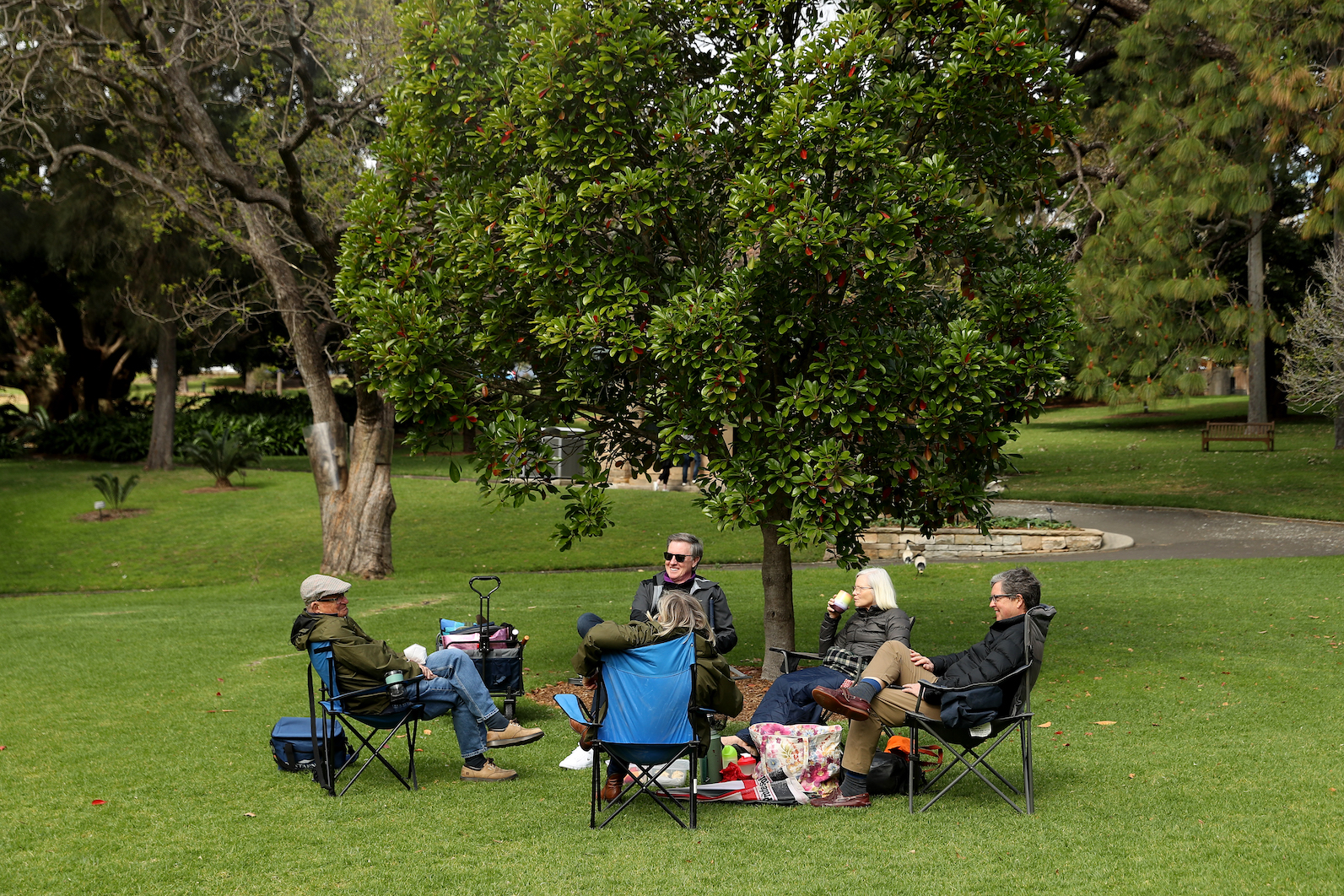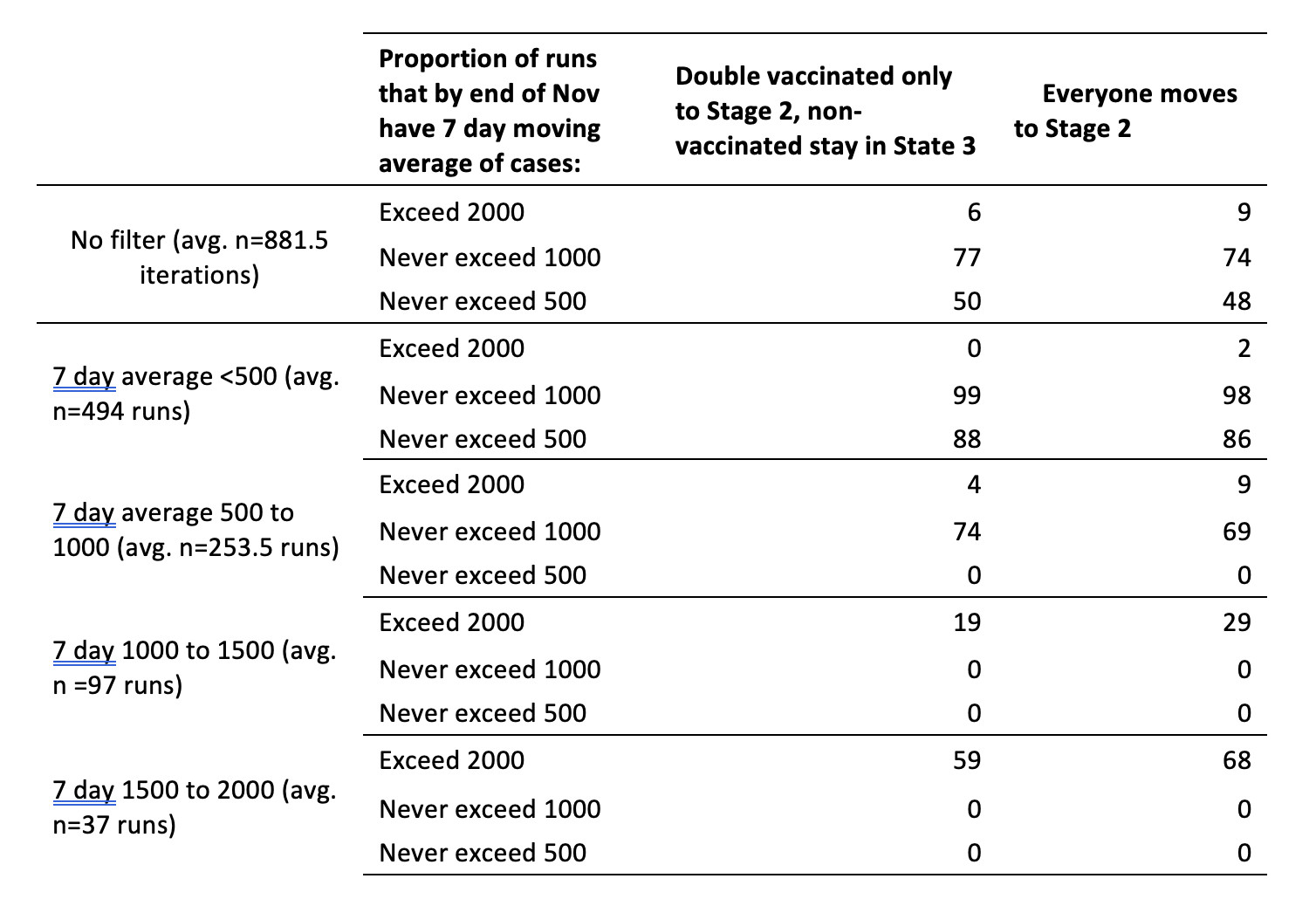
NSW should be ‘okay’ opening up

New modelling suggests that NSW – as well Victoria and ACT – should have confidence that opening up will be ‘okay’ at 70 to 80 per cent double vaccinated
Published 5 October 2021
New South Wales has a roadmap to ease restrictions. An initial easing at 70 per cent for people aged over 16 who are double vaccinated is predicted to be around 11 October.
This will mean a loosening of restrictions in NSW that will include gatherings of up to five vaccinated visitors indoors; the freedom to visit hospitality venues, retail and other facilities – with four square metre density limits and the ability to attend events – with numbers capped and COVID-Safety plans.

At 80 per cent of people double vaccinated (which is predicted to be late October), restrictions ease further including indoor gatherings at your home of 10 vaccinated people and the ability to travel between metro and regional NSW.
But the concerns about these easings of restrictions are numerous.
How will the liberties of vaccinated-only adults be implemented and enforced? And will it just see a large surge in cases that overwhelms the health services and dashes hopes for a Merry Christmas?

On 13 September, the University of New South Wales’s Kirby Institute modelled a sizeable surge in case numbers from the loosening of restrictions, with intensive care (ICU) occupancy around Christmas peaking at 562 to 1192 across six scenarios. And, in modelling commissioned by NSW, the Burnet Institute also predicted increasing case numbers in Sydney (not including regional NSW) peaking at between 1,219-2,046 between 13-20 September.
But forecasting infection rates is extraordinarily difficult. So why is it so hard? Well, many reasons.
Foremost is population heterogeneity – which basically means that there is always subpopulation variability in the data.

The current waves in NSW and Victoria are highly concentrated in specific populations characterised by geography, demographics or occupation.
Indeed, the Victorian surge in recent weeks is – according to COVID-19 Commander Weimar on 24 September – largely driven by household-to-household contact movement like “helping out your mother, going to see your cousin, all those day-to-day things we all desperately want to go back and do”.
That is, people breaking the rules, which on top of the virus transmitting in specific populations more than the general population, makes modelling very challenging.

Nevertheless, modelling can at least try to assist.
We used our agent-based model, COVID-19 Pandemic Tradeoffs, and applied it to NSW. We calibrated the model settings – for example, how tight the public health and social measures are and what compliance levels are like – to replicate the case numbers seen in August through September. We included ongoing and increasing vaccine coverage, and a setting essentially halfway between a hard and soft lockdown.
We then filtered the model to those runs between 1000 to 1500 cases on 11 September. We modelled from 16 October – as vaccinated adults shift to Stage 2 restrictions and enjoy more liberties. This also factored in, using a 2020 Victoria classification, unvaccinated adults staying in Stage 3.5 restrictions.
Further, we assumed that no government (in their right mind) would release restrictions even for vaccinated people if daily cases were greater than 2000 – so we also excluded all simulations from our model that had drifted above this threshold on 16 October.

On top of all of this, we then factored in perfect compliance, where only vaccinated people move to Stage 2 and completely imperfect compliance where everyone (including unvaccinated people) shift to Stage 2.
And then we let the model run for another 6 six weeks.
So, what did we find out? Firstly, the future is incredibly uncertain. The figure above shows the incredibly wide uncertainty in forecasts – the bands in the figure are 90 per cent uncertainty ranges.

Health & Medicine
Public attitudes to immunity passports
This is not a weakness of modelling. It reflects the highly stochastic (or random) nature of COVID-19, population heterogeneity and other uncertainties.
Nevertheless, we can see that with perfect compliance and only double vaccinated people going to Stage 2, the 95th percentile (or the upper part of the band) does not track up. But it does go up with everyone, including unvaccinated people, going to Stage 2 where there is a risk of a dramatic increase in case numbers.
If we look at the table, it summarises the patterns in terms of the probability of certain thresholds being hit or breached within the six weeks after 16 October.
Only six per cent of our simulations – with double vaccinated people moving to Stage 2 restrictions with perfect compliance – see 2000 cases a day exceeded. This we assume is – surely – a level at which restrictions would be reversed and even a lockdown introduced to prevent health services and society becoming too stretched.

Even with complete non-compliance where everyone moves to Stage 2, only nine per cent of our simulations breach this 2000 cases per day threshold. Worse, but not that much worse.
At first glance, our results may be surprisingly optimistic. But further reflection should be reassuring.
Firstly, the case numbers are decreasing – opening up when case numbers are decreasing gives more headroom or more scientifically, as the effective reproductive number (R) is less than 1.0 the risk of lessening restrictions at numbers surging dramatically are less.

Health & Medicine
The facts of vaccinating our kids against COVID-19
Secondly, vaccine coverage is increasing all the time – once the 70 per cent double vaccination target is met, vaccine coverage continues to go up in the simulated population to about 85 per cent.
That said, we all need to be cautious interpreting modelling.
Our modelling results suggest the NSW Government – as well as the Victorian and Australian Capital Territory governments – should have confidence that opening up will be ‘okay’.
But as we’ve all learnt throughout this pandemic, we have to be flexible, so governments must also be prepared to take a pause or even retreat if case numbers kick up and look like they may crash through 2000 cases per day.
Banner: Getty Images


